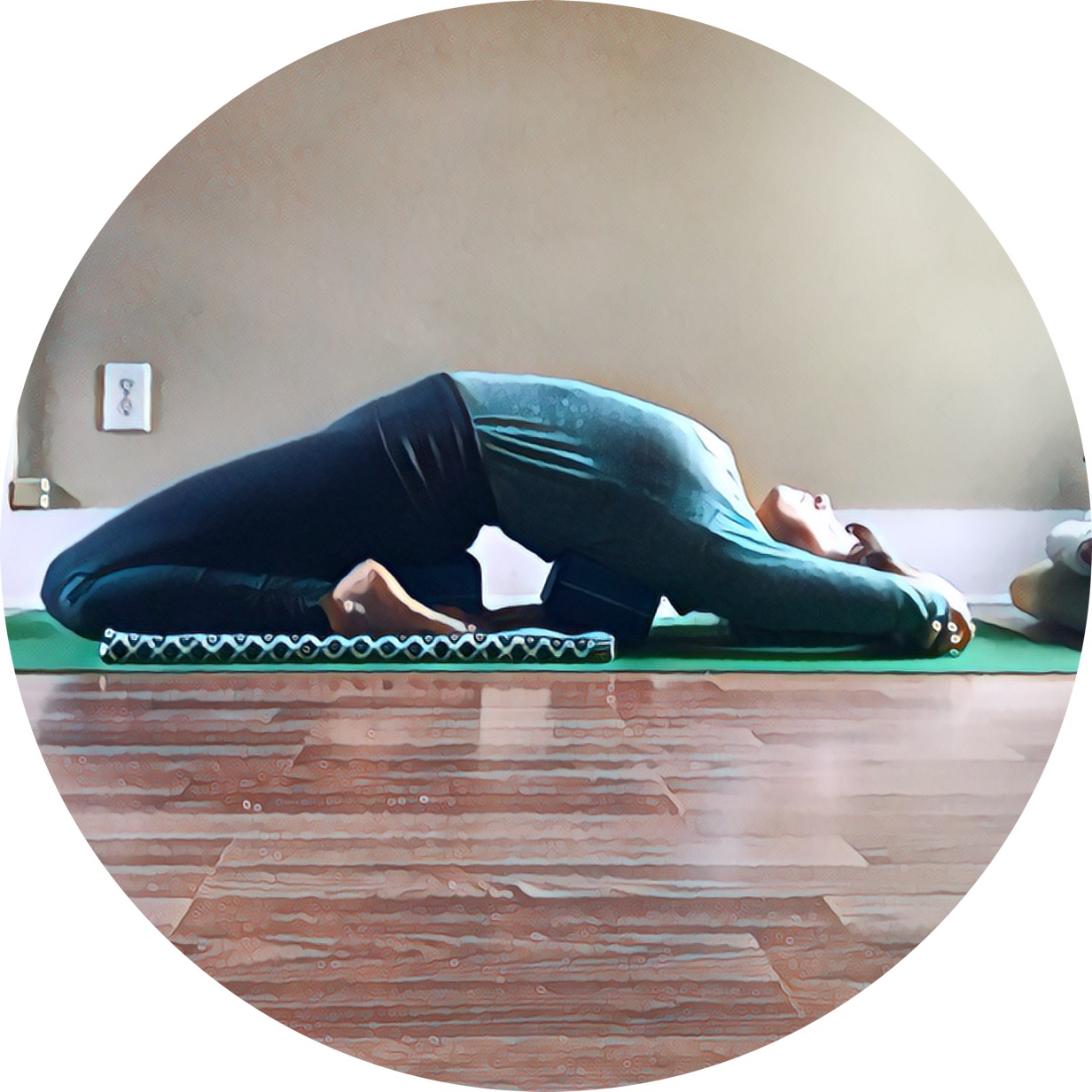The more years I practice, the more INTERNAL my experience of yoga becomes. While I still value strong alignment cues, the shapes of the asanas + the mechanics of the body, the real MEAT + POTATOES for me is going inside.
To value QUIETUDE and STILLNESS is not something inherent in our fast-paced world. It's not flashy. It doesn't sell well. That's actually one of the things that draws me to it. There are so many other factors pulling us away in a hundred other directions. Well, I'll show them! I'm just going to sit here quietly and watch my breath.
We can't really truly know ourselves without some contemplative experiences. My self-awareness grows by leaps and bounds though my practice; not strictly though yoga postures (though they're a great gateway in!), but through the INTERNAL arts of meditation, pranayama and quiet contemplation.
Forward folding postures can invoke the experience of moving inward. They quite literally move us into ourselves. With the onset of the cold + dark take this opportunity to move INSIDE.



















